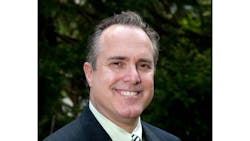Green Cleaning: Practical Pragmatism
Albert Einstein is credited with defining insanity as "doing the same thing over and over again and expecting different results." So as we enter 2011, it is important to begin the year thinking about how things can be done differently to achieve the expected results.
This year will in many respects present the same challenges as 2010, which often makes planning easier. Unfortunately, although the economy seems to slowly be getting better, it won't grow quickly enough to magically increase funding for schools and universities. At the same time, the demands placed on facilities and services will increase as enrollment is likely to remain high or even increase as both young and old have a hard time finding jobs, encouraging them to stay in school or to return for more education.
However, even with all of the challenges experienced in 2010, it was a terrific year for the green movement overall — green cleaning specifically. And there are plenty of opportunities for improvements that can make 2011 a terrific year. This has nothing to do with naive optimism. Rather, it has everything to do with knowledge, experience and "practical pragmatism," which is defined as a willingness to accept life's reality (e.g., a poor economy or less staff) and focus on the things that actually can be accomplished. In the end, it is all about getting things done!
So to apply our "practical pragmatism," following are some thoughts for schools and universities to consider for 2011:
-
Green cleaning increasingly will be thought of as a "best practice," but schools and universities should continue to find ways to improve the program, and do so at no additional cost.
In 2011, one of the practical strategies is to identify opportunities for improvement by asking suppliers of cleaning products or services to benchmark the current program, which often will be done free of charge. To ensure that their audit is objective and not just an opportunity for them to sell something, use the application process from the "Green Cleaning Award for Schools & Universities" sponsored by American School & University along with the Healthy Schools Campaign and the Green Cleaning Network. The nominees of this competition use the awards process for exactly this purpose, and it has demonstrated enormous value at no added cost.
-
For those schools and universities expanding their green programs beyond just green cleaning, another practical and pragmatic strategy is to use the U.S. Green Building Council's LEED rating systems. Please note: The rating systems simply can be used as a benchmarking tool — it is free and does not require hiring consultants or certification. Rather, LEED for New Construction, LEED for Schools and LEED for Existing Buildings: Operations and Maintenance can help identify opportunities for improvement across the whole spectrum of facility-related issues. It makes practical sense that if improvements are to be made that they are at a minimum consistent with LEED requirements, whether a school is trying to earn certification or not.
-
For universities striving for the broader goal of sustainability, consider getting involved with the Association for the Advancement of Sustainability in Higher Education (AASHE). Although its Sustainability Tracking, Assessment and Rating System (STARS) is somewhat complex, as with LEED it can be used as a valuable benchmarking and decision making tool.
Start with the simple and no-added-cost issues like green cleaning, and change the things that can be changed. Collectively, schools and universities can make an important difference in 2011.
Ashkin is executive director of the Green Cleaning Network, a 501(c)3 not-for-profit educational organization.
